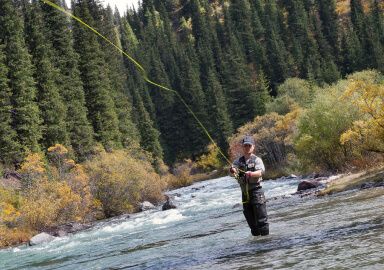1
listings
–
price starting from
1
countries
–
to the nearest trip
About Gurnard
Gurnard is a term used loosely in many parts of the world for a group of similar looking and usually closely related fish. They are members of three subfamilies of the Triglidae and include “true” gurnards, “flying gurnards” and “sea robins”. The most populous species are the red gurnard (C. cuculus), spiny gurnard (C. spinosus) and Cape gurnard (C. capensis).
All gurnards have similar shapes, being large headed with big mouths and their bodies often look heavily armoured. Most have large pectoral fins the top part of which can be greatly modified to be massive colourful “wings”. The bottom spines are sometimes modified to move independently allowing the fish to “walk” along the sea floor.
The largest species, the yellow gurnard (C. lucerna), can attain 6.6 kg. (14.5 lbs.) and 83 cm. (32.5 in.) and live for 18 years. All gurnards feed mostly on bottom living invertebrates such as crabs, shrimps and worms but will occasionally take small fish. No major migrations have been noted and gurnard are usually a solitary species.
How to Catch?
Most gurnard fishing is carried on from boats, as this fish is usually caught on the bottom in the depth range of 10-30 m. (33-98 ft.). To catch a gurnard, anglers typically choose light or medium spinning equipment, with natural bait or artificial lures. The use of a ledger or running rig is popular but plastic or other artificial lures can also be productive. The use of a “flasher” can attract the fish to your bait or lure. It is best to use a fairly light leader as gurnard have excellent eyesight.
Gurnard are not shoaling fish and hunt individually, constantly cruising round the area looking for possible prey items. They usually live on muddy or sandy bottoms and so drifting in a slow current means that you can cover a lot of ground efficiently. In deeper waters the time of fishing is irrelevant but, in harbours or from jetties, the fish usually come inshore after high tide and feed on the outgoing tide. Gurnard may not often induce an adrenaline rush but they can be an interesting and indeed beautiful catch among other more conservative-coloured species.


